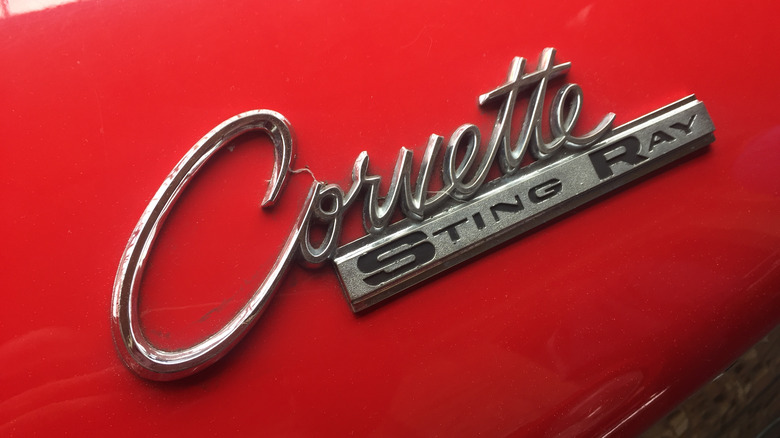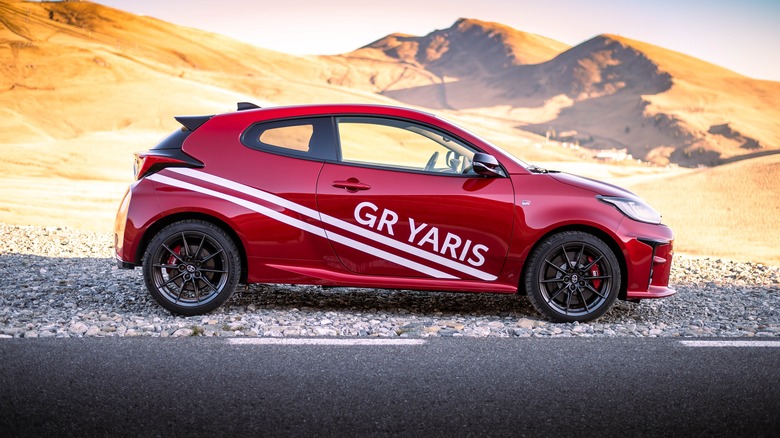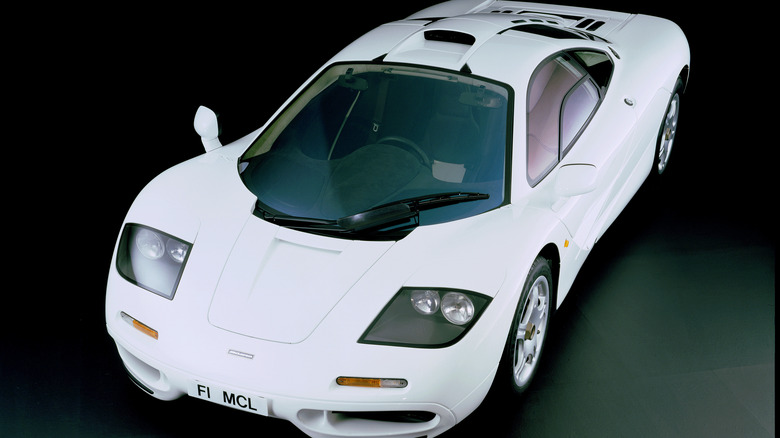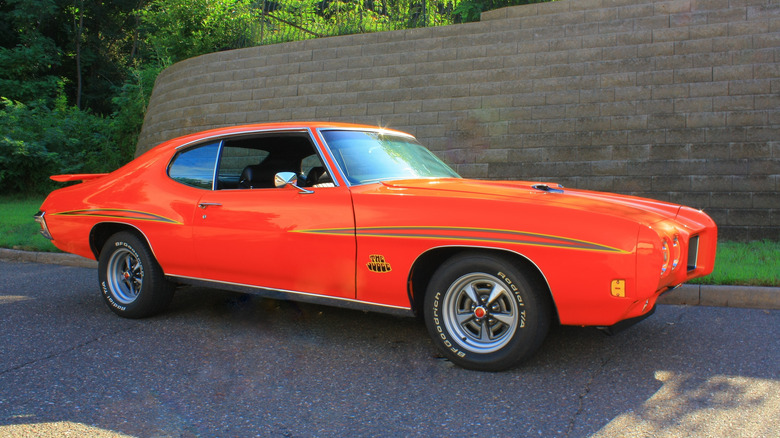5 Incredible Cars That Are Even Faster Than Advertised
Why in the world would an auto company lie about their car's actual horsepower or top speed? As it turns out, there are a few reasons.
In the early days of dedicated auto magazines (i.e., Car and Driver, Sports Car Illustrated, etc.), automakers sent "ringer" vehicles out for review so the writers and editors would give their cars a glowing review. These "ringers" were usually specially tuned in-house and thus easily outperformed any car the Average Joe could purchase off the showroom floor.
In the early 1970s, the Federal government passed a new law that made companies change how they advertised a car's horsepower to the masses. Previously, they used "gross" horsepower, or what a completely stripped-down engine could produce under the perfect circumstances. The new law made them use "net" horsepower, or what the engine actually kicked out "under simulated highway conditions." According to the New York Times, once the law was enacted in 1972, the difference in the advertised horsepower of some cars dropped by as much as 35%.
Some say it had to do with keeping auto insurance premiums down. Others believe manufacturers were trying to undersell horsepower to fool the governing bodies of competitive racing organizations (like the NHRA). Sometimes, automakers just fibbed for no apparent reason. In all likelihood, it's probably a little (or a lot) of all these things that contribute to the strange phenomena, and here are five cars that prove it.
Chevrolet L88 Corvette
Chevy's L88 Corvette is an All-American gem and was, for all intents and purposes, a clandestinely developed race car. With only 216 built between 1967 and 1969, Zora Arkus-Duntov — the "Godfather" of the legendary sports car itself — wanted them on the racetrack, not driven by any ole Average Joe.
The general public could only order this particular 'Vette with a heavy-duty performance suspension, rear sway bar, Positraction differential, and upgraded brakes. The 427 cubic inch stock V8 engine sitting under the hood had a reported output of 430 hp and was strapped with "the largest Holley carburetor ever used on a factory GM engine," according to Motor Trend. It could zip down the quarter-mile in under 12 seconds.
And by all accounts, the 430 horsepower was a bald-faced lie.
Chevy never mentioned horsepower data when the L88 was first released in '67. Instead, it waited a year before claiming the stock engine banged out 430 horses. Road & Track thought another 100 could be added to that total, and MotorTrend agreed. Car and Driver believed its output was a bit higher, sitting between 540 and 580 horses.
Whatever the actual number, it's obvious Chevrolet did what it could to keep that information from the general public and securely within the folds of the racing folks.
Toyota GR Yaris
You might not think a Toyota GR Yaris is "incredible," but you'd be wrong. While the demure-looking all-wheel-drive hot hatch homologation has a funky name, the engine cradled under its tiny hood is anything but. This ambitious street-legal rally car is strapped with — hold on to your emergency brake — a 1.6-liter three-cylinder engine.
But it's not just any 1.6-liter three-cylinder engine. This powerplant is a turbocharged three-cylinder engine with direct injection that ranks it as the most powerful in the entirety of the automobile's long history. The Japanese automaker advertised the GR was capable of kicking out 257 horsepower with 265 pound-feet of torque, had a top speed of 143, and could zip to sixty-two miles per hour in 5.5 seconds.
However, testing done by TopGear showed that it could do it in nearly a second less (4.6 seconds), while independent dyno testing showed the GR kicking out a maximum horsepower reading of 278 and torque of 367. All from a pocket-sized three-banger, and that's what makes it truly incredible. Unfortunately, Toyota still has no plans to make the GR Yaris available in the United States.
Ferrari F40
Ferrari and "incredible" go together like peanut butter and jelly, but seeing one on this list might be as shocking as finding out who Luke Skywalker's father was for the first time.
When the F40 rolled out in 1987, Enzo Ferrari felt it was the world's best car. The plan was to keep the production run at around 400, but 1,311 were eventually made. Of those, 213 came to the shores of the United States – despite having an MSRP of $399,150.
The F40 is the first 200-mph production car, and it achieved that by using Kevlar and carbon composites instead of steel. At the time, this was an innovative approach, one that brought the curb weight down to 2,425 pounds. Ferrari used lightweight materials to reduce chassis weight by 20% while tripling structural strength. It was a true technical achievement."
Ferrari claimed the twin-turbocharged 2.9-liter V8 punched out 478 horsepower and 425 lb.-ft. of torque. Factory-provided numbers declared the F40 could go from zero to 62-mph in 4.1 seconds and zero to 124 in 12 seconds. They don't run "quarter mile" stats in Italy, but they do run a "standing kilometer" (.62 of a mile), and it did that in 21 seconds at 168-mph.
Yet, even with those staggering numbers, they were still lying. Over the years, experts and journalists tested the F40 and concluded that it "easily" and consistently produced well north of 500 horsepower, making it all the more incredible.
McLaren F1
What's good for the goose is good for the gander, as the old adage goes. Or, in this case, what's good for the Italian Ferrari is good for the British McLaren because it's every bit as incredible and unbelievably just as understated. Between 1992 and 1998, only 106 were built, making it one of the rarest supercars on the planet.
Not to be outdone by Enzo and his Ferrari, Gordon Murray and McLaren set out to create their own version of the world's best road car. Beginning with an arrowhead design he had been tinkering with since 1969, Murray brought the F1 to life by using a carbon fiber chassis and tub, a central driving position, wide dihedral doors, and a flat underside. All of these worked in aerodynamic unison to reduce weight, drag, and increase downforce – without spoilers or wings.
The naturally aspirated 6.1-liter V12 engine custom-built by BMW Motorsports kicked out over 620 hp, 14% more than Murray had anticipated. Additionally, McLaren reported a top speed of 231 miles per hour. The F1 can get up to 60 miles per hour in 3.2 seconds, 100 in 6.3 seconds, 150 in 12.8 seconds, and 200 mph in 28.0 seconds. It does the quarter-mile in 11.1 seconds at 138-mph.
But more lies! It's since been proven that the F1 can hit a top speed of 240.14-mph. So, the F1 took the title from the F40 and was the fastest production car on the block ... at least for a hot minute.
Pontiac GTO The Judge
Let's talk about some true blue American muscle. All rise because here comes ... The Judge. The Judge was built by General Motors in 1969 and was the most powerful Pontiac GTO available at the time.
Except Pontiac downplayed "the most powerful" part, claiming that the special edition only kicked out a few more horses than the standard GTO, which many believe is the car that created the whole "muscle car" category in the first place. GM claimed The Judge was fitted with a 366-hp, Ram Air III 400 cubic inch engine, while the standard engine found in most GTOs was a 350-hp 400-cid.
Lies!
Road & Track found that Pontiac executives had sent a review unit of The Judge (probably finely tuned) to Car Life magazine in '69 and reportedly told them that the engine's gross horsepower rating was a total fabrication done for political reasons. At the time, it was customary for GM to designate a car's power output in relation to its weight because it had a rule that stipulated all of its vehicles (except for the Corvette) were to have one horsepower per every 10 pounds of weight.
The verdict is clear: don't always believe the numbers dolled out by car manufacturers.





